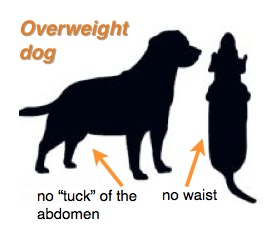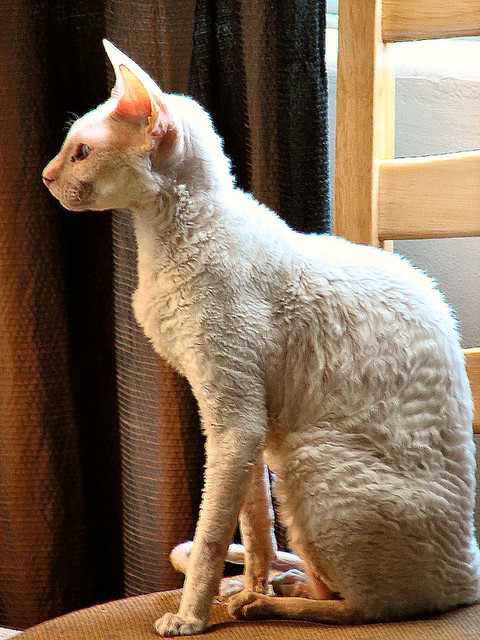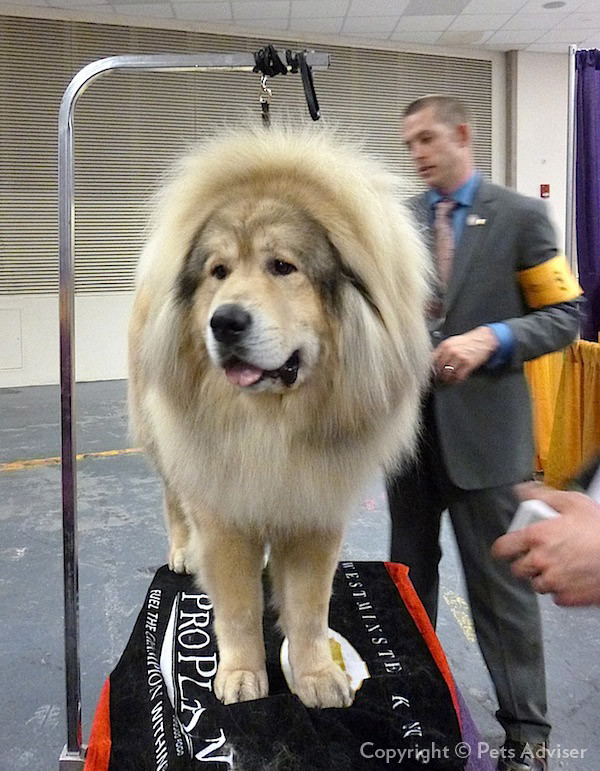 |
| Siberian Husky - Photo by Jeffrey Beall |
The most common kinds of health problems in Siberian Huskies have to do with their eyes. Cataract is a clouding of the eye's lens, which can diminish the amount of light entering the eye. Juvenile cataracts can be seen by the age of two. Fortunately, most cases are not severe enough to cause blindness, but that is a possibility.
Research shows that the DNA that causes cataracts might reside in a recessive gene. That is a double-edged sword. On one hand, it is good that the gene is recessive so that dogs who carry it do not get cataracts. On the other hand, it makes breeding Siberian huskies riskier because it is not always clear which dogs are carriers. More research needs to be done to develop a test that would recognize the gene for cataracts in carriers.
Research shows that the DNA that causes cataracts might reside in a recessive gene. That is a double-edged sword. On one hand, it is good that the gene is recessive so that dogs who carry it do not get cataracts. On the other hand, it makes breeding Siberian huskies riskier because it is not always clear which dogs are carriers. More research needs to be done to develop a test that would recognize the gene for cataracts in carriers.
Progressive retinal atrophy is another genetically transmitted disease of the eye. It affects the rear part of the eye where light forms a picture after going through the lens and center of the eye. It affects mainly male dogs, being inherited in a sex chromosome, the X. Females have two X chromosomes and can be carriers without the disorder if only one X chromosome is defective. When a mother dog with one defective X has puppies half her male puppies will have the defect, which can lead to blindness by the age of 5 months.
Corneal dystrophy is a mild disorder of the eye, which does not affect vision. It affects the transparent covering of the outer part of the eye. Fat deposits in the cornea can cause a slight cloudiness, sometimes forming a circle, which is not harmful. It can be seen with any eye color.
Hip dysplasia is another genetic disorder that can affect Siberian huskies , but it is fortunately rare, believed to be present in only about 2 percent of the dogs. It is caused by a combination of genes, making it difficult to breed out of the population, since normal healthy breeding pairs can produce a certain number of puppies with hip dysplasia. The disorder affects the acetabulum, or top, of the femur, or thighbone, where it fits into the hipbone. When there is a poor fit arthritis, or inflammation of the joint, can take place, and the joint can be worn away. It can make walking, running or climbing stairs painful and can result in constipation.
, but it is fortunately rare, believed to be present in only about 2 percent of the dogs. It is caused by a combination of genes, making it difficult to breed out of the population, since normal healthy breeding pairs can produce a certain number of puppies with hip dysplasia. The disorder affects the acetabulum, or top, of the femur, or thighbone, where it fits into the hipbone. When there is a poor fit arthritis, or inflammation of the joint, can take place, and the joint can be worn away. It can make walking, running or climbing stairs painful and can result in constipation.
A concentrated effort is being made to evaluate Siberian Huskies for defects and to keep them from breeding. The Siberian Husky Ophthalmic Registration (SHOR) keeps track of dogs who have had veterinary examinations each year to make sure that they have no eye defects. The Orthopedic Foundation for Animals (OFA) performs the same function for hip dysplasia.
Before buying a Siberian Husky it is a good idea to check and see whether both parents have OFA and SHOR registrations and clean bills of health Before buying a Siberian husky ask to see the OFA and SHOR registrations of both parents. That will not guarantee to get a healthy dog, but it will decrease your risk of getting a puppy with eye or hip problems. Enjoy your new best friend.
A concentrated effort is being made to evaluate Siberian Huskies for defects and to keep them from breeding. The Siberian Husky Ophthalmic Registration (SHOR) keeps track of dogs who have had veterinary examinations each year to make sure that they have no eye defects. The Orthopedic Foundation for Animals (OFA) performs the same function for hip dysplasia.
Before buying a Siberian Husky it is a good idea to check and see whether both parents have OFA and SHOR registrations and clean bills of health Before buying a Siberian husky ask to see the OFA and SHOR registrations of both parents. That will not guarantee to get a healthy dog, but it will decrease your risk of getting a puppy with eye or hip problems. Enjoy your new best friend.
Articles Source: GoArticles |
















